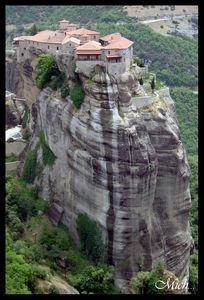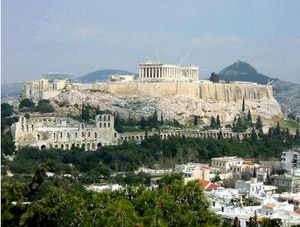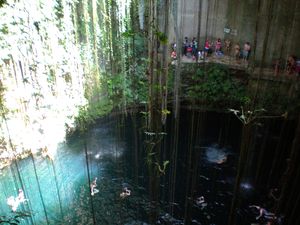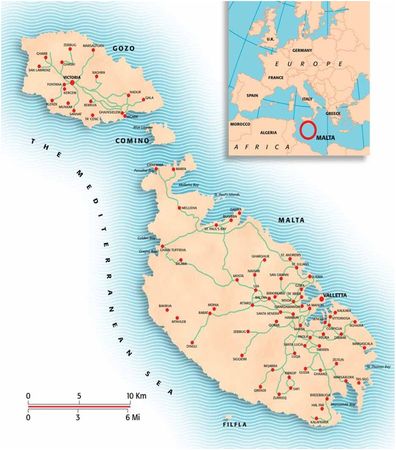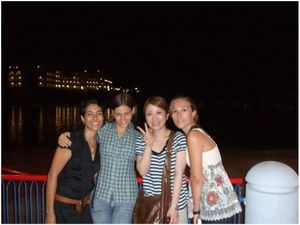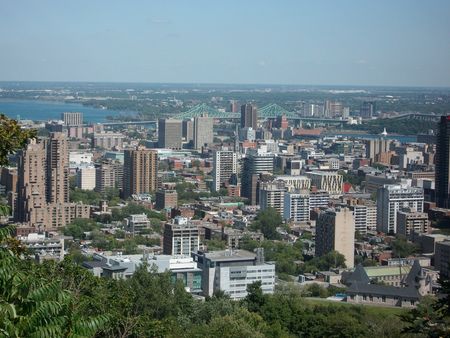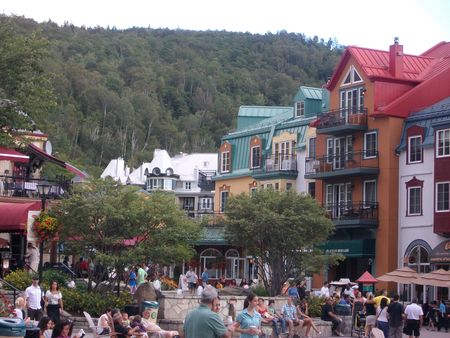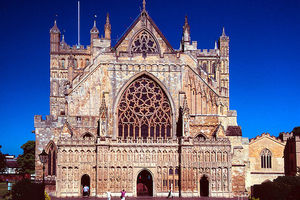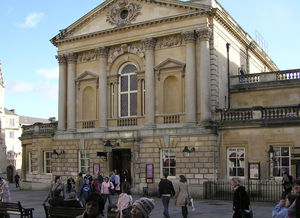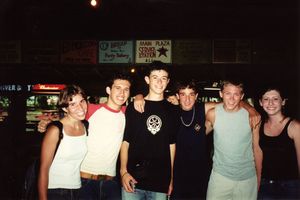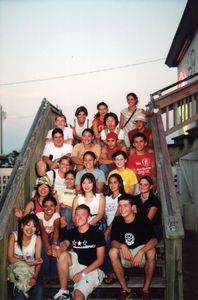A traveler is a man who goes finding a piece of conversation at the other side of the world
Jules Barbey d'Aurevilly
For the six-week internship that we needed to do, at the end of L2 in the engineering course of health, I decided to take advantage of the opportunity offered by the University of Montpellier I and PECLA program (Programa de español y Cultura Latinoamericana), giving a purse of a thousand euros to go for a month study Spanish in Cordoba, Argentina.
One month in Argentina
First a few words of introduction to place Argentina in its geographical context: eighth country in the world and second in South America by its size, it covers 2.8 million square kilometers, or about five times France! Apart from the islands of the South Atlantic and Antarctic Sector scattered over 1.2 million square kilometers. Stretching over nearly 3200 kilometers long, from La Quiaca, on the Bolivian border, to Ushuaia in Tierra del Fuego, the country presents a lot of contrasted geomorphic characteristics. And this is indeed the word "contrast" that best defines Argentina, a nation of many faces, torn by a significant antagonism between Buenos Aires, the capital city and the rest of the territories, a country famous for its vast grassy plains -its pampas- but dominated by deserts and high mountains, a land overpulated in some places (39.7 million inhabitants) and almost uninhabited in others, a nation immensely rich and poor, both republican and federal levels according to it, but deeply religious and centralized in reality, a mixed-race people, finally, whose imagination is torn between many European nations who colonized it, and the rest of America. I remember this verse of Aragon: "Country double, where the hare and the puma ca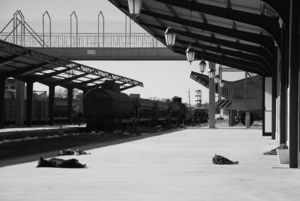 n live'
n live'
If French culture has deeply marked the country, at the time symbolizing good taste and quality (Peugeot, Renault and Citroen are still numerous on Argentine roads), on the other hand what do we know about this distant country? More than 13 hours by plane from Paris to Buenos Aires. Country crowned by the literary work of Borges, the footwork -sometimes with hands- of Maradona, the legend of Ernesto Guevara, Evita Peron ardor, the voice of Mercedes Sosa, the fists of the boxer Carlos Monzón, or memories of Spanish courses with ''Las historietas of Mafalda” de Quino, our vision of Argentina is unfortunately limited -as it is often the case among cultures- by some pictures: principally Tango, meat and wine.
So without any real knowledge of the country, or of South America, I decided to try my luck by going to study Spanish in Cordoba for a month, with around thirty other students of the UM1 (no one from the Pharmacy School), being housed in private homes.
Second city in the country which occupies with pride its exact geographic center, Cordoba is also its heart as its festive atmosphere and lively streets are famous. Indeed, the metropolis of over 1.3 million residents accounts almost 150,000 students in 12 faculties, including the Economics School where my classes were held.
The first thing that hit me on my arrival was to see how Cordoba’s inhabitants -los Cordobeses- were incredibly calorosos, that is to say welcoming! How many times have they come talk to me on the street or outside a cafe, with a broad smile, to chat or engage a frenzied discussion about football (Maradona es casi Dios) or policy.
Then, gradually, I realized that if Argentina -as well as many other places on Earth- has succumbed to the lure of Western fashion, becoming progressively uniform with its globalization (brands and multinational criteria of clothing, standardized landscapes: missed for a change of scenery!), nonetheless there still are a strong identity, scenes of life and customs, often trivial but so peculiar, carrying a meaning so strong for the traveler that I was. I remember those abandoned dogs, sleeping all daylong here and there in the city, passing for dead. This socks street vendors, incomprehensibly so many, but no one could explain it, next to daggers vendors. Mate of course which is drunk everywhere. Feral cats, eating from the bowl of anteaters, in the oldest zoo in Argentina. Or those few musical notes improvised on the central square, a nice evening at midnight, and suddenly couples of all ages begin to dance in an extraordinary simplicity and sensuality in a semi dark surreal. Oh the magic of a Tango or a Cuarteto ...
Moreover, since we come to speak about the Tango, it is unthinkable not to say a few words about the story of its fascinating birth! In the late nineteenth century, migration was in a full swing. Single men in search of work and social success from all over Europe fail in the neighborhoods of Buenos Aires. At the heart of this universe was born the Tango, in this atmosphere of single men, this tower of Babel where rode unhappiness, of life left over there, over in their country. That is the truth: at first Tango was only danced between men! Usually in brothels. This explains that it is the dance of manly strength, sexual desire, nostalgia: a ‘sad thought that is danced’. It is a dance of great purity of feeling, although born from a strange mixture of all sides. Indeed it has the power of an African rhythm, the determinism of flamenco, the rigor of European dances. I think this is the most sensual dance that is: follow your feet, intertwine, legs ajar, bodies entangled, dancers capsize.
If the Tango is an extraordinary thing, we really cannot say the same about the city of Cordoba! Kind of architectural patchwork, urban chaos such confusing, bristling with towers ill-assorted recalling that a few decades ago, the all-concrete was on the crest. Nevertheless, there are still many traces of its glorious Jesuitic past, , but drowned in the midst of impersonal building facades eroded by exhaust gases. Yet to my great surprise, Cordoba knows how to tame, and gently weaves its spell around the traveler who knows how to give it some time. Gradually. Little discoveries after little discoveries. And without realizing it you let yourself be lulled by the special way of life, seduced by its charm. It's too late: you don’t want to leave! Cordoba is one of the few cities around the world where you make a secret promise of return. One day...
As I have said before, my classes were held at the National University of Cordoba, in the aptly named Casa Verde, at the following times: 9.30am - 12am then 13pm – 15.30pm, from Monday to Thursday. In my class, we were a group of eight students from various nationalities (French, Brazilian, American, Lebanese, Norwegian and South Korea), which allowed many exchanges and comparisons between our personal traditions and customs. We were about thirty French to be left with the PECLA program. Courses, taught in Spanish by a local professor, were focused on the fundamentals of grammar and conjugation, sometimes relying on audio and video to develop our listening skills. I took advantage of the weekends to visit Argentina. In this regard it is important to know that if, in the 50s, the country had the best network of railroads in Latin America, things were deteriorated and there are now only a few trains, left mainly for tourism and hundreds of abandoned lines. A dense network of buses was developed to compensate this difficulty, liaising between all major cities, with modern and comfortable buses. They offer three different levels of performance: the semi-cama (comparable to an economy class chair in a plane), the cama (larger seat and tilt 120 ° and 160 °), and sometimes first class. The trips can last a dozen hours to nearly two days, many companies serve meals on board (tasteless, but this varies greatly from one company, a journey, or even a bus to another), even champagne! Like an airplane, a film can be shown, and hostess provides the well being of passengers.
I - Cordoba la docta :
Now that the framework is well established, I will give an account of the various trips I have undertaken. The first weekend was devoted to the visit of Cordoba and its surroundings. The city was founded in 1573 by Jerónimo Luis de Cabrera, known as Córdoba de la Nueva Andalucía. It quickly acquired a stable population and a thriving economy through trade with the cities of the north. Under the influence of the Jesuits, the college Colegio Máximo was founded in 1610. Three years later they found the University of Córdoba (named today Universidad Nacional de Córdoba), the oldest in the country, which gave to the city its nickname : The Docta. It continues to deserve this designation: in 2005 it was the Latin American city with one of the highest proportions in the world of university students in relation to its population!
In 1782 it became the federal capital. Nowadays the town is an important cultural center and has been protagonist of important historical facts in Argentine life, as for example the University Reform of 1918, and the so-called "el Cordobazo": in 1969 a student, and then popular uprising, led the fall of the dictator Juan Carlos Onganía, and then the collapse of the military regime.
Once past the crisis of 2002, Córdoba has resurfaced as a major industrial hub thanks to the high profitability of farming and ranching. Restarting the construction of buildings of any type, expansion of the commercial sector (driven by higher consumption), improved productive capacity and the establishment of new businesses have given back to the city of Córdoba more economic strength than before the crisis.
This little interlude history better illuminates the problem of haphazard architecture previously mentioned. However, in the center there are many buildings related to its colonial and Jesuitical past. The most famous, told to the world heritage by UNESCO in 2000, is the Manzana Jesuitica built by the Jesuits in the early seventeenth century. Occupying the equivalent of a block, it consists of the Colegio National de Montserrat, the Church of the Compañía de Jesús, and the former university. It also includes five estancias or ranches farms built in the surrounding villages to ensure the income of the Jesuits.
Like most historical monuments in Argentina, the visit seemed relatively tame. By world heritage we have always tried to imagine a kind of wonderful architecture but this is not necessarily the case! And if these monuments have a particular importance in the history of Argentina, from the strictly aesthetic standpoint, they cannot bear comparison with some public or religious buildings in Europe, dating from the same period (Versailles or Buckingham Palace are also of the seventeenthcentury). Despite these disappointing visits, I would nevertheless like to quote my helping heart, the church del Sagrado Corazon de Los Padres Capuchinos (Sacred Heart of The Capuchin Fathers). Built between 1926 and 1934 in the Gothic Revival style, it can only surprise. Olready by the colors and forms of its facade: the colorful and twisted columns reminiscent of an Italian pasta (its architect Augusto Ferrani was-as its name indicates wonderfully-Italian), the sculptures of animals (turtles, spiders, salamanders, ... ), and the golden mosaics, all give a small Orthodox side to this monument. But also because of the inside bluish where a double staircase allows mounting above the nave in order to have a view overlooking the church choir, and the feeling of calm and reassurance emerging from the building.
From my other visits of the city, I can also mention the zoo (the oldest of Argentina) where we observed some emblematic (and very curious) animals from South America behind unconvincing protective barriers. I also visited the nearby village of Alta Gracia, famous for its estancia (even more disappointing, as basic as a farmhouse in Perigord), and the childhood home of Che that despite a bias pro Castro was very informative and nostalgic while avoiding lapsing into pathos.
II – Mendoza, Route of the Andes:
During the second weekend in the company of a dozen French people, we decided to go to Mendoza, located in the west of the country, at the foot of the Andes, near the Chilean border. The fourth largest city of Argentina was founded in 1561 and ravaged by a terrible earthquake exactly three hundred years later that will make more than 10 000 victims. Its reconstruction was entrusted to the French architect Ballofet. Two hundred years later the result is close to catastrophic, and yet it seems that it is a fairly nice town for Argentina... Cables and wire weaving a huge network above streets, an architecture that does more outdated than ancient, and nothing to see apart from a huge park.
 The city is almost famous for its wine business, producing the best wines of the country (it is possible to tour the bodegas), and oil processing. It is also the gateway to the Andean Road. This road will be the highlight of our stay, with of course the Andes. This is the famous Ruta Nacional 7, part of the Panamericana, leading to Chile via a tunnel dug under the mountain range, through the Aconcagua, which forms with its 6962 meters the highest point of the continent. That explains his nickname: Colossus of America! From Mendoza to the tunnel, some 200 km are to go; we will go from 700 m to over 3,000 m.
The city is almost famous for its wine business, producing the best wines of the country (it is possible to tour the bodegas), and oil processing. It is also the gateway to the Andean Road. This road will be the highlight of our stay, with of course the Andes. This is the famous Ruta Nacional 7, part of the Panamericana, leading to Chile via a tunnel dug under the mountain range, through the Aconcagua, which forms with its 6962 meters the highest point of the continent. That explains his nickname: Colossus of America! From Mendoza to the tunnel, some 200 km are to go; we will go from 700 m to over 3,000 m.
After skirting the vineyards and refineries, the road climbs slowly through the snowy pre-cordillera. From the outset, the show is magnificent ... After passing Lujan de Cuyo, the road truly braves the dizzying wall of the cordillera: it is stunning! I was expecting to see white landscapes all day: beautiful but boring! But if we have to know only one thing about the landscapes of Argentina is that monotonous does not exist. Just past the pre-cordillera, we fall into a wide reddish plain surrounded by mountains spreading a swatch from light brown to green, contrasting with the winter landscapes we just left. It is hard to describe the feeling of grandeur and majesty that emerges from these huge panoramas! Mineral sceneries, dry and snowy at once: paintings of contrast flown by the legendary condors. The road is heavily used by international transports lorries, it is one of the major land way of communication between Argentina and Chile, but also between Atlantic and Pacific. On a large serving, the road runs along the course of the Rio Mendoza, which has its source in the high peaks of the Andes, in the area of Aconcagua, and winds down to its namesake city. A Potrerillos, about 45 km from Mendoza and 1351 meters above sea level, a large dam was built in 2001 to improve the drinking water of Mendoza. The lake thus created has become a popular resort for Mendoza, especially during weekends. However the development of this lake has not been so fortunate as some 85 families have been rehoused in a new village...
And the road keeps going up, describing tighter and tighter laces... We finally arrive at Uspallata, town of 3,200 inhabitants located 1,751m above sea level. This large village does not offer particular character; it is just the last important Argentinean town before the Chilean border. The road is muddy, houses are made of bits and pieces, and covered with sheet metal, restaurants are rustic... But the landscape is absolutely gorgeous. Against a background of blue sky, the snowy peaks of the Andes seem at our fingertips. Uspallata past, the road changes again. The mountain walls are closing, el Camino de los Andes becomes increasingly steep. We leave for a time the Ruta Nacional 7 (indeed, we take the old road) to Picheuta, a tiny hamlet where a ruined historic bridge sleeps on a frozen brook. The Army of the Andes, led by General Jose de San Martin (who is the object of worship throughout the country: not a city that hasn’t got a place in his name) is passed in 1817 to oust Spanish outside the country ... Many condors soar above us, and we can admire the way in which they use warm air currents in their spectacular flight. After few kilometers, we find the asphalted Ruta Nacional 7 with great pleasure. Now we go beyond the 2,000 m of altitude. Soon, the snow becomes ubiquitous on the slopes of the mountains first, and then to the edge of the road, which has recently been cleared. We arrive at the ski resort of Los Penitentes, situated at 2,580 m altitude. This is a very wide valley, which owes its name to stunning rocky peaks vaguely resembling monks' penitent (the Argentines love to assign a resemblance to every mountain, every rock ...). Of ski resort it only has the name, and we do not regret not having taken our ski equipment as we first envisaged. Few slops for children, lasciviously dragging at the foot of the mountains. But we have not yet completed our ascent. The road continues to climb, and we now come to Puente del Inca, a tiny village perched at 2720 meters above sea level. The main attraction of the place is a natural arch (Puente means bridge) that spans the Rio de las Cuevas. Iron and sulfur which saturate burning water are deposited everywhere and give to the place a pretty yellow-ocher color. According to legend, an Inca prince, very sick, visiting the region, was arrested by the river. To save him, his followers made a bridge with their bodies, which was transformed by magic into a stone bridge! In fact, long before the Incas, this natural bridge reinforced by man had already been passed by the Indian Huarpes and Mapuche. In 1925, a luxury spa hotel was built there, with an underground passage connecting it to the bridge, but it was destroyed by an avalanche in 1965. We can see its ruins under the Puente del Inca.
But we still have to see the highlight of the show: Her Majesty Aconcagua itself! It is certainly not to climb it, but simply to admire it from the road. Unfortunately, the colossus is modest; it is rare to see it entirely because the clouds often obscure its top. It is nevertheless the opportunity to walk in the snow, in a freezing cold, and feel the first effects of oxygen deprivation.
But it is already more than 15H pm, we must now come back to Mendoza. It is the occasion of review what we have already admired this morning.
The next day we visited the San Martin Park before taking the bus to Cordoba. I thought I had seen the most beautiful landscapes of Argentina, the result would surely contradict me every others weekend!
III – Iguazú, a certain vision of paradise:
During the following weekend, I decided to travel with a smaller group, to allow better organization and flexibility. Objective? Iguazú! Here we go for 21 hours of bus!
In 1542 Alvar Cabeza de Vaca, a Spanish explorer, discovered the Falls of Iguazú. Originally named St. Mary’s falls, they are now named Iguazú, which means "big waters" in Guaraní. Created in 1934 at the border of three countries: Paraguay, Argentina and Brazil, Iguazu National Park (67,620 hectares) surrounds the famous waterfalls declared World Heritage by UNESCO in 1986.
According to legend, the falls were created by an angry god of the forest. Carob, an Indian warrior, who abducted a young girl named Naipur whose divinity was infatuated, had fled from the river by canoe. Wild with rage, the god brought down the riverbed in front of the lovers, forming steep falls where rushed Carob, becoming a rock at their base. Naipur survived in the form of a palm tree that rises above the falls, watching over her lover. It seems as if the roar of the falls does not hide it, we can still hear the demonic laughter of the divinity. The tree and the rock are still visible nowadays.
At daybreak, awakened by a strange light, I open the curtains of the bus to come face to face with the startling spectacle of the subtropical forest! The night before we were driving on a horizontal landscape of short-grass and huge pastures and there I saw for the first time in my life this lush vegetation, this profusion of green swallowed up in dampness and ocher of the morning. At times the huge mass of vegetation was scarified by bloody red roads. That reminded the terrible quest of Captain Willard dreaming to kill Colonel Kurtz. A scenary of mercenaries and smugglers, Danny Archer would have been stalking another Blood Diamond!
We arrived in Puerto Iguazu, where we spent two nights. Nearby, a panorama allowed us to embrace in one glance at the three countries. The next day we took a bus to reach the national park at about twenty minutes from the city. The first impression is very unpleasant: an exorbitant price is reserved for foreigners, and the park is covered with a lot of trails, steps and bridges, taked by hordes of tourists yelling -there is even a small train to move- looking more like Disneyland than the wild world I was expecting.
First destination: the Garganta del Diablo (Devil's Throat)! We must walk almost two kilometers of footbridges over the river before reaching it. Along the way we see the former bridge, washed away by a flood. The new is supposed to come off more easily to provide less resistance to the raging waters: not reassuring! I remember that, at the beginning of the last century, when the falls started to become a star attraction, residents of the area offered to take tourists canoeing on the brink of the precipice, struggling against the waves. But in 1938, a boat with 7 German tourists was carried away by the current in a fatal fall of over 70 meters! This kind of trip is now banned! At the end of the footbridge, the show is amazing: in a kind of cove the muddy and swirling waves are dumping up to 6 million liters of water every second. The noise is infernal, water is sprayed into the air creating a huge smoke and some crazy birds dive in the middle of this wet hell.
But it is another track below that will permit us to admire the extent of the 275 waterfalls that plunge amid the lush vegetation. Without doubt the most beautiful waterfall in the world, I remember Niagara Falls; they seemed so pale in comparison! There is also a little extra for these falls: its people. The famous coatis, raccoons’ cousins who can seem lemurs, and heavily dependent on tourists (not very smart) who will be quickly clear of all their food! They swarm through the tracks and can be easily approached. By mid afternoon, deciding to leave the trail-too-beaten, I ventured alone in a muddy track into the forest to another fall where it was possible to swim. This wild track full of clouds of mosquitoes, has allowed me to cross tapirs, monkeys, many birds and terrible ants-bulls as big as a thumb!
On Sunday, before taking the bus to Cordoba, I decided a quick shipment to Paraguay. Because of the dangerous reputation of the country and the limited time available, I found myself alone to undertake the trip. And it was a real episode as in Beijing Express: I found myself alone in Paraguay without any local money and no bus to come back (the first bus driver assured me that I could come back safely and on time, but according to the Paraguayans bus schedules do not exist in this country!) I was lucky to meet a couple of Brazilians who payed me the bus and then drove me back to my bus station in Argentina. And they even helped me to retake the Brazilian border (you must go through Brazil to get between Paraguay and Argentina) despite some missing borders stamps in my passport! Indeed, having crossed the border to go by bus, I could not come back by car according to the administration... That is a fact: every country has its own administrative inconsistencies! And it's only two minutes before and thousands liters of sweat in less that we arrived at the station before the departure of my bus!
IV – Salta Province, a miracle of delicacy:
It is widely known that the perception we have of passing time is very versatile, and yet I cannot believe how quickly it spent during my stay! It's already time for my last trip, which will also be the longest because this week we have fewer classes. During these five days of trecking through the most traditional, and the best preserved Indian heritage, I decided to go only with another student. This allowed us to speak more with people, to fully immerse ourselves in the Andean culture, and to travel each day as it comes, without the organization problems engendered with group.
Therefore we left for the Andean Northwest, to the Bolivian border. Two famous Quebradas (kinds of deep valleys) extend on both side of the city of Salta and give to the province its reputation: the Humahuaca Quebrada in the north and the Quebrada de La Conchas in the south.
The first day we decided to go to the extreme north of the country by taking a bus from Jujuy to La Quiaca (border town) inorder to spend an afternoon in Bolivia. Little by little the bus was swallowing up the miles, and we saw the population changing at each stop: Europeanized travelers at the beginning gradually gave way to more chiseled faces, more Indians features, who were themselves transformed in faces and costumes typically Bolivians: colorful clothes and bowler hats for women. In this regard, according to legend, a Bolivian dealer would have ordered 20 000 bowlers in England but by forgetting to specify the color, brown hats was delivered. No man wanted a hat with that color and, to avoid bankruptcy, our merchant decided to decorate them with a ribbon to sell them to Indian women!
The next two days, we descended by visiting the Quebrada de Humahuaca, which stretches over 150 km along the course of the Rio Grande (which is horribly misnamed in that period). Quebrada de Humahuaca is registered since 2003 as World Heritage by UNESCO. It is famous for its highlands where wild llamas graze called ‘Puna’, lost villages (there is one which only has access to electricity since 6 months!) and especially for its geological formations that give to the mountains improbable colors! I was however very disappointed with archaeological sites dating from the pre-Columbian area (their golden age is around the tenth century), which are nothing more than piles of stone recalling the shepherds’ houses in the Pyrenees. Forthermore it is easy to see that most of the ruins have been recently rebuilt for tourists.
The most interesting stop was undoubtedly the Punamarca village (510 inhabitants, 2912 meters)! The show is great: the village is located at the bottom of a multicolor mountain called El Cerro de los Siete Colores (Mountain of the Seven Colors). From the small trail that goes around, the view is absolutely breathtaking. It's a real mineral firework increased by the clear Andean blue sky, and the vast carpet of green grass. The Lonely Planet guidebook talks about a "spectacular formation resembling to the marzipan delirium of a megalomaniac pastry" and it is exactly right! A small cemetery which also succumbed to the multicolored fashion climbs around it.
The village is also the starting point to visit Las Salinas Grandes, a huge salt desert located more than two hundred kilometers, and beyond a 4000 high meters collar (territory of the wild vicunas): no buses, we need to borrow a taxi with other tourists. In this white immensity, some blue spots contrast like swimming pools where water has the color of the Seas atoll. Here they extract the salt by hand!
We take the road towards Salta. Along the way, I notice on the roadside many colorful altars: they are dedicated to Difunta Correa (there people leave bottled water to remember that the holy died of thirst) or Gauchito Gil (and then it is a pile of all objects you can leave as long as they are red). The road is lined with villages and hamlets whose houses are built with adobe bricks (sun-dried mud bricks) always organized around an old white church, whose frame and doors are often made of wood cardoon, which is the name of these large candelabra cactus dotting the surrounding desert. The few breaks that we take give us the opportunity to taste empanadas of llamas!
During the last days of the week, we decide to venture into the Quebrada de las Conchas, south of Salta, towards the town of Cafayate. The weather is beautiful, giving us a clear sky, even if the wind is sometimes very cold. Having successfully negotiated the price to rent a cab all morning, we take the national 68, bordered by fields of tobacco.
After 160 miles, we finally enter the –almost- wild world of the Quebrada. The Spanish term Conchas (meaning shells) recalls the origin of these geological formations: ancient sedimentary layers that were millions of years before on the seabed, before the action of telluric forces which arises to the surface where wind and rain are still making a great job of erosion with a minuteness of several millennia...
It is the ghost town of Alemania, resembling an old Wild West town, that defines the entrance. From its past still remain (as in many villages Argentina) rails of an old disused railway line. In the morning light, mountains let burst their intense red amid dry vegetation. If the landscape was already beautiful, it was going to embellish bend after bend, to become indescribably amazing. I only remember few national parks in the United States that shared the same feeling, such a mastery degree in the mineral art.

Our driver shows us several stops: the Garganta del Diablo (huge fault cutting the mountain), the Amphiteatro (sort of amphitheater carved into the cliff, famous for its fabulous acoustics: from the entrance we hear a chorus of twenty men singing, in fact they were only three!), and always breathtaking panoramas. At this moment we have only one desire: to take a bag and go walking for days in these dreamlike landscapes.
At the end of the road, arriving to Cafayate, rock forms are really unusual: an Indian palace, an obelisk, and even a giant toad! The city itself –as Mendoza- is known for its vineyards: this is an opportunity to taste a wine ice-cream! Nearby, the Indian site of Quilmes is equally disappointing as other archaeological sites. We are very excited to return to Salta in the evening, to review all the wonders of the morning!
V – Talampaya, historical cliff is watching you:
This weekend, it's back to France! I can not bring myself to go back already! With some friends, when classes end, we decide a final trip to see two parks: Talampaya and Valley of the Moon (for lack of time and transportation, we cannot visit it). So here we go for nine hours by bus, then four hours in a local bus that leaves us in the middle of nowhere, on an arid plain, only a dirt road lets us reach the park entrance.
National Park since 13 years, in 2000 UNESCO declared it Cultural and Natural Heritage of Humanity. The surrounding is so wild this place (215,000 hectares) was only discovered in 1970 during a road construction.

Landscape structure is the result of tectonic movements that caused the uplift of large rocks, then water and wind erosion and as it happens in barren climates, large temperature variations: a very hot day and a cold night. This landscape is characterized by a canyon surrounded by huge orange walls, steep over more than a hundred meters! Few million years ago we could have met here some dinosaurs...
Other park attractions: many petroglyphs drawn by aboriginal peoples, and amazing geological formations of evocative shapes. With, as backdrop of this arid desert, perfectly contrasting snowy mountains. Without forgetting guanacos and gray foxes that we could observe closer!
On the way back, the bus gets us in the middle of a vast desert road: it is crowded because of the after school and we will make the whole journey half-asleep on the stairs. At the end of the week I take the return flight, remembering that to leave is to die a little…
CONCLUSION
To conclude, the list of everything I learned during this trip is so long! Traveling is ‘like asking all of a sudden to the distance what time only could give us bit by bit' said Paul Morand.
This country was a huge revelation for me, a great favourite, a moment of happiness and discovery, or more simply: a month of pleasure. From a cultural perspective, this travel has been enormous: I discovered ways of life, customs, and traditions with strong identity. I enriched myself thank to the influence of South American culture that I didn’t know very much, and travelers from around the world with whom I had the chance to exchange, and all these friendly people that I met.
So I can happily say how much this travel has met all my expectations, all my hopes, and well beyond!

Johan SOHET
Back

